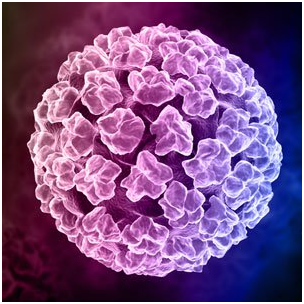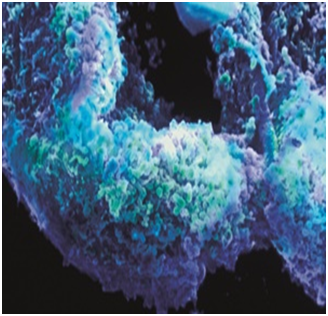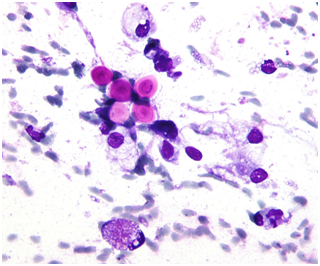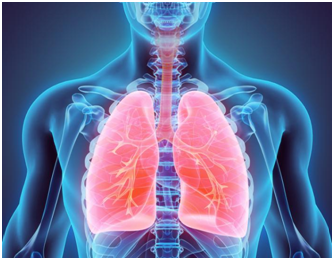Infection Panel
Infection is invasive of an organism body tissue by disease causing agents, their multiplication, and the reaction of host tissues to the infectious agent and the toxins they produce.
The incidence of emerging infectious disease in human has increased within the recent past. Developing countries such as India suffer disproportionately from the burden of infectious disease given the confluence of existing , environmental and socio-economi
Multiplexing panels
- Fast-track mastermix
- FTD Endogeneous control
- Respiratory infections
- Gasroenteritis
- Meningitis
- Sexsually transmitted infections
- Fever, rash, childhood infections
- Eye infections
- Infections of the immunosuppressed
- Hepatities
- Tropical fever
- Respiratory, STD and Fungal multiplexing assays
- Respiratory (16 plex) assay
HPV
 HPV infection commonly causes skin or mucous membrane growths (warts). Certain types of HPV infection cause cervical cancers. More than 100 varieties of human papillomavirus (HPV) exist.Different types of HPV infection cause warts on different parts of your body. For example, some types of HPV infection cause plantar warts on the feet, while others cause warts that mostly appear on the face or neck.
HPV infection commonly causes skin or mucous membrane growths (warts). Certain types of HPV infection cause cervical cancers. More than 100 varieties of human papillomavirus (HPV) exist.Different types of HPV infection cause warts on different parts of your body. For example, some types of HPV infection cause plantar warts on the feet, while others cause warts that mostly appear on the face or neck.
STI
 A sexually transmitted infection (STI) is caused by an organism (bacteria, virus, or parasite) that can be passed from one person to another during sex or intimate contact.
A sexually transmitted infection (STI) is caused by an organism (bacteria, virus, or parasite) that can be passed from one person to another during sex or intimate contact.
Most STIs are passed (or transmitted) between sexual partners through unprotected oral, vaginal (frontal) or anal sex. Some STIs are passed by skin-to-skin contact. Using condoms and other barriers for vaginal (frontal), oral and anal sex is a good way to lower the chances of passing many STIs.
STIs are common infections and if you are sexually active, it is likely that you might have an STI at some time in your life. There are things you can do to lower the chances of getting an STI
| STI Essential Assay | Genital Ulcer Assay | Candidiasis | Bacetrial VaginosisAssay |
| C.Trachomatis | HSV1 | C.Albican | C.Vaginalis |
| N.Gonorrohoeae | HSV2 | C.Glabrata | A.Vaginae |
| M.Genitalium | CMV | C.Tropicalis | BV-Associated Bacteria 2 |
| M.Hominis | VZV | C.Parapsilosis | Mobiluncus type 2 |
| T.Vaginalis | LGV | C.Krusei | Megasphaera type 1 |
| U.Urealyticum | T.Palladium | C.Lusitaniae | B.Fragilis |
| U.Parvum | H.Ducreyi | C.Dubliniensis | Lactobacillus spp. |
MENINGITIS
 Meningitis is an inflammation of the membranes (meninges) surrounding your brain and spinal cord.The swelling from meningitis typically triggers symptoms such as headache, fever and a stiff neck.Most cases of meningitis in the United States are caused by a viral infection, but bacterial, parasitic and fungal infections are other causes. Some cases of meningitis improve without treatment in a few weeks. Others can be life-threatening and require emergency antibiotic treatment.
Meningitis is an inflammation of the membranes (meninges) surrounding your brain and spinal cord.The swelling from meningitis typically triggers symptoms such as headache, fever and a stiff neck.Most cases of meningitis in the United States are caused by a viral infection, but bacterial, parasitic and fungal infections are other causes. Some cases of meningitis improve without treatment in a few weeks. Others can be life-threatening and require emergency antibiotic treatment.
| Viral Panel 1 | Viral Panel 2 | Bacterial Panel |
| HSV1 | Enterovirus | Streptococcus Pneumonia |
| HSV2 | Poliovirus | Neiserriameningitisdis |
| VZV(HHV3) | Coxsackievirus | Haemophilus influenza type b |
| EBV(HHV4) | Listeria Monocytogenes | |
| CMV(HHV5) | Group B streptococcus | |
| HHV6 |
Respiratory Panel

The respiratory system consists of all the organs involved in breathing. These include the nose, pharynx, larynx, trachea, bronchi and lungs. The respiratory system does two very important things: it brings oxygen into our bodies, which we need for our cells to live and function properly; and it helps us get rid of carbon dioxide, which is a waste product of cellular function. The nose, pharynx, larynx, trachea and bronchi all work like a system of pipes through which the air is funnelled down into our lungs. There, in very small air sacs called alveoli, oxygen is brought into the bloodstream and carbon dioxide is pushed from the blood out into the air.
| Panel 1 | Panel 2 | Panel 3 | Panel 4 |
| Influenza A Virus | Adenovirus | Bocavirus | Mycoplasma Pnuemonia |
| Influenza B Virus | Enterovirus | Rhinovirus | Chlamydophilia Pneumonia |
| RSVA | Parainfleunza Virus 1 | Coronavirus NL 63 | Legionella Pneumonia |
| Respiratory Synctial | ParainfleunzaVirus 2 | Coronavirus 229E | Haemophilus influenza |
| Parainfleunza Virus | Parainfleunza Virus 3 | Coronavirus OCA4 | Streptococcus Pneumonia |
| Flu-A-H1 | Parainfleunza Virus 4 | Bordetellae | |
| Flu-A-H1 pdm09 | MetapneumoVirus | Bordetella Pertussis | |
| Flu-A-H3 | Bordetella Parapertussis |

